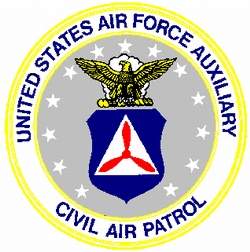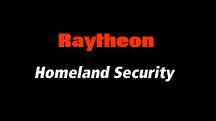Flight Crew Sends Digital Aerial Photos Via Satellite Phone
E-Mail To Alert Coast Guard
 While testing a new digital imaging system off the
Florida Keys Apr. 25, a Civil Air Patrol flight crew spotted a raft
carrying three Cuban refugees and helped direct the Coast Guard to
a successful intercept.
While testing a new digital imaging system off the
Florida Keys Apr. 25, a Civil Air Patrol flight crew spotted a raft
carrying three Cuban refugees and helped direct the Coast Guard to
a successful intercept.
Coast Guard Ensign Brett Workman said worsening weather
approaching the Keys would have endangered the rafters’ lives
had they not been picked up. “I credit the Civil Air Patrol
with saving their lives,” said Workman, public affairs
officer and Coast Guard auxiliary liaison in Key West (FL).
This Is A Test. This Is Not Only A Test
CAP’s Advanced Technologies Group was testing new
technology its members are considering for homeland security and
narco-terrorism reconnaissance flights. They were working with
Raytheon Co. and the Coast Guard at the Key West station because
that location, with its incidence of border violations and drug
trafficking, offered a real-world environment for the testing.
 CAP national headquarters staff members Terry
Raymond and Rick McDow saw the 13-ft. raft (file photo, right)
during a routine test flight on April 25. In previous tests, they
had been using an airborne digital imaging system which allows a
crew member to take photos with a high resolution digital camera
and transmit them via satellite phone to any e-mail address
anywhere in the world while still airborne. While their flight that
day did not involve tests on that system, they still had it
installed and operational on their Cessna 206. “I looked down
and saw what appeared to be a dark gray raft carrying
people,” Raymond said. “The Coast Guard had briefed us
that the area we were searching could be part of an escape route
for Cuban refugees, so I immediately thought of that. Even though I
wasn’t in the right position for taking photos, I grabbed the
camera and got the best shots possible.”
CAP national headquarters staff members Terry
Raymond and Rick McDow saw the 13-ft. raft (file photo, right)
during a routine test flight on April 25. In previous tests, they
had been using an airborne digital imaging system which allows a
crew member to take photos with a high resolution digital camera
and transmit them via satellite phone to any e-mail address
anywhere in the world while still airborne. While their flight that
day did not involve tests on that system, they still had it
installed and operational on their Cessna 206. “I looked down
and saw what appeared to be a dark gray raft carrying
people,” Raymond said. “The Coast Guard had briefed us
that the area we were searching could be part of an escape route
for Cuban refugees, so I immediately thought of that. Even though I
wasn’t in the right position for taking photos, I grabbed the
camera and got the best shots possible.”
Using the test equipment, Raymond immediately transferred his
digital images of the raft onto the onboard laptop computer. He
then used the ARNAV RCOM-100 satellite phone and Globalstar network
to transmit the photos by e-mail to the Coast Guard. He was able to
get the high-resolution photos of the raft to authorities within
two minutes and was also able to talk with authorities over the
same phone line.
Stay There - We're Coming
The Coast Guard requested that the CAP aircraft remain onsite
immediately dispatched a cutter to intercept the refugees. The CAP
crew took additional photos of the intercept. The three refugees
were uninjured and eventually were repatriated to Cuba.
 CAP and Raytheon had just concluded a formal
presentation of the equipment the day before for high-ranking
military officials, including General Ralph E. Eberhart, commander
of the North American Aerospace Defense Command and commander of
the US Northern Command, Peterson AFB (C0). During that
presentation, an airborne CAP flight crew was able to take and
transmit a clear digital photo of a surface ship spotted on radar
within minutes, via e-mail, using a satellite telephone link from a
laptop computer in the aircraft to Raytheon’s First Responder
and other computers on the ground.
CAP and Raytheon had just concluded a formal
presentation of the equipment the day before for high-ranking
military officials, including General Ralph E. Eberhart, commander
of the North American Aerospace Defense Command and commander of
the US Northern Command, Peterson AFB (C0). During that
presentation, an airborne CAP flight crew was able to take and
transmit a clear digital photo of a surface ship spotted on radar
within minutes, via e-mail, using a satellite telephone link from a
laptop computer in the aircraft to Raytheon’s First Responder
and other computers on the ground.
“This technology significantly improves CAP’s
capabilities in reconnaissance as well as search and rescue,”
said Col. Drew Alexa, who heads CAP’s Advanced Technologies
Group. “The equipment is far less bulky than our older
photography systems. With this new digital imaging system, we need
only carry a digital camera, a laptop and the system itself. The
whole system weighs only about 12 pounds.”
No Fuss, No Muss
Alexa says the new technology is also important because it
eliminates the need for each CAP mission flight to have a ground
crew waiting with special equipment to receive the images.
“With our older medium-resolution video imaging systems, we
had to have a ground crew within the proper proximity of the
aircraft to receive the images from the plane and transmit them to
the waiting customer. Since the ARNAV system uses e-mail and
high-resolution digital camera technology, we can send better
photos in a shorter period of time directly to the customer’s
e-mail address. Essentially we’re cutting out the middle man
in the transmission.”
 Alexa and his team researched the ARNAV system and
its ability to link with the Nikon CoolPix 5700 digital cameras and
standard laptop computers commonly used by CAP units in the field.
As a result of the successful tests, CAP hopes to purchase several
of the new digital imaging systems for its eight regions within the
United States, with additional purchases expected in the
future.
Alexa and his team researched the ARNAV system and
its ability to link with the Nikon CoolPix 5700 digital cameras and
standard laptop computers commonly used by CAP units in the field.
As a result of the successful tests, CAP hopes to purchase several
of the new digital imaging systems for its eight regions within the
United States, with additional purchases expected in the
future.
CAP is also working with Raytheon Co. to field test the
company’s High Frequency Surface Wave Radar. Ultimately,
suspected targets will be identified with this new highly accurate
radar and a probable location called in to a CAP aircraft. The
plane will then proceed to the location and its crew will take
high-res photos of the target and transmit them to the ground
within minutes.
“Our Advanced Technologies Group was able to identify the
best equipment on the market today, figure out how it could work
with our existing equipment and set up very high-profile field
testing – all in the space of about three months,” said
Maj. Gen. Richard Bowling, CAP national commander. “This
couldn’t have happened without effective teamwork among the
CAP volunteers in the field, technical reps for the equipment
manufacturer and operations and logistics personnel from our
national headquarters. It’s testimony to the power of
teamwork in meeting a pressing need – the need for safety and
security – in our country today.”
 ANN's Daily Aero-Linx (04.16.24)
ANN's Daily Aero-Linx (04.16.24) Aero-News: Quote of the Day (04.16.24)
Aero-News: Quote of the Day (04.16.24) Airborne 04.10.24: SnF24!, A50 Heritage Reveal, HeliCycle!, Montaer MC-01
Airborne 04.10.24: SnF24!, A50 Heritage Reveal, HeliCycle!, Montaer MC-01 Airborne 04.12.24: SnF24!, G100UL Is Here, Holy Micro, Plane Tags
Airborne 04.12.24: SnF24!, G100UL Is Here, Holy Micro, Plane Tags Airborne-Flight Training 04.17.24: Feds Need Controllers, Spirit Delay, Redbird
Airborne-Flight Training 04.17.24: Feds Need Controllers, Spirit Delay, Redbird






